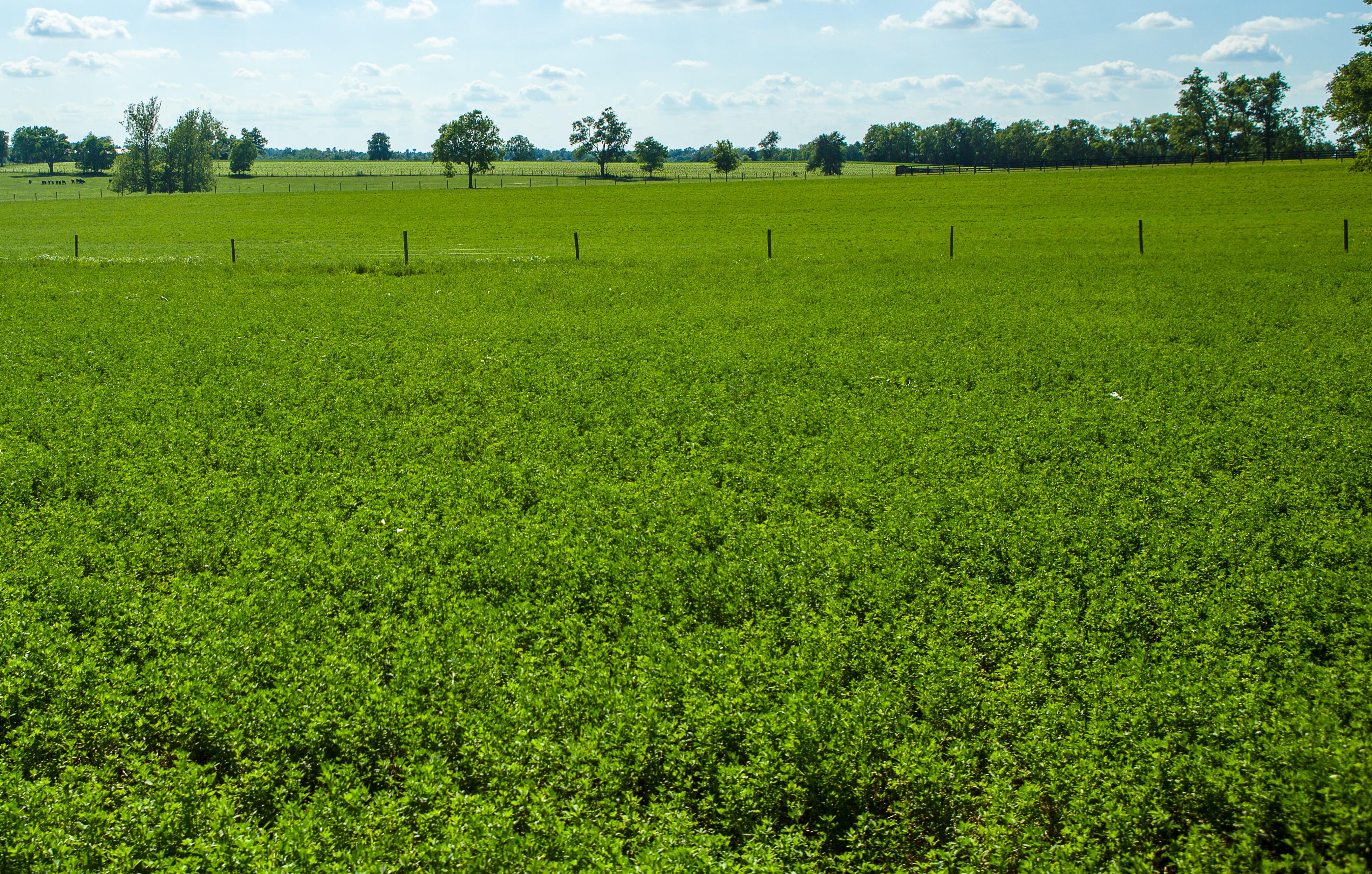Building blocks for life: UK researchers uncover how legumes select nitrogen-fixing bacterial partners

University of Kentucky Martin-Gatton College of Agriculture, Food and Environment researchers, in collaboration with an international research team, have uncovered a genetic mechanism that explains how legumes select specific bacteria to form nitrogen-fixing root nodules.
Legumes are a critical group of plants, including alfalfa, clovers, beans and peas, that convert nitrogen from the atmosphere into a fixed form becoming an essential building block for proteins that plants and animals need. Growing legumes, according to many UK Cooperative Extension publications, offers many benefits to livestock and wildlife.
Bacteria are the key players in this nitrogen conversion process. Over time, legumes have developed the genetic tools to be more discerning in the bacterial strains they select as partners, but scientists have not understood fully how the process works. By understanding this symbiotic relationship between legumes and bacteria, this research aims to provide more sustainable, environmentally friendly agricultural practices.
Spearheaded by researchers from the UK Department of Plant and Soil Science (PSS), the study focuses on two closely related bacterial species: Sinorhizobium meliloti and Sinorhizobium medicae, which are known for their symbiotic relationships with Medicago legume species. Their study, titled "Species-specific microsymbiont discrimination mediated by a Medicago receptor kinase,” was published in Science Advances.
"Learning how legumes and bacteria have adapted to prefer specific partners is crucial to understanding how they work together," said Hongyan Zhu, co-corresponding author and PSS professor. "Our research identifies a specific gene in the Medicago plants that plays a pivotal role in discriminating between these two strains of bacteria."
Through genetic mapping and functional analyses, they pinpointed this gene on chromosome 8 of Medicago. The gene, making a receptor-like kinase known as NS2, acts as a genetic filter, preventing most strains of S. medicae from infecting certain Medicago species.
The research team employed a sophisticated array of techniques, including genetic crosses, genome sequencing, and CRISPR/Cas9 gene editing, to confirm NS2 as the key determinant in preventing S. medicae infection in Medicago roots. They also identified a bacterial gene, rns2, that is crucial for triggering the NS2-mediated nodulation restriction.
This research emphasizes the complex genetic interactions between plants and bacteria that shape their symbiotic relationships. This is critical to opening new methods for future studies into plant-microbe interactions and evolutionary variations.
"These findings could help develop new farming techniques to improve how legumes naturally add nitrogen to the soil," Zhu said. "By learning how legumes and bacteria work together, we might be able to apply this process to other crops, leading to more sustainable and eco-friendly farming practices."
The study was a joint project involving researchers from UK Martin-Gatton CAFE, the HUN-REN Biological Research Centre in Hungary, Cornell University and the U.S. Department of Agriculture.
This material is based upon work that is supported by the National Institute of Food and Agriculture, U.S. Department of Agriculture, under award number 2014-67013-21573 and by the U.S. Department of Agriculture, Agricultural Research Service under Agreement No. 5850428003. Any opinions, findings, conclusions or recommendations expressed in this publication are those of the author(s) and do not necessarily reflect the view of the U.S. Department of Agriculture.
Research reported in this publication was supported by the National Science Foundation under Award Number 1758037. The opinions, findings, and conclusions or recommendations expressed are those of the author(s) and do not necessarily reflect the views of the National Science Foundation.
Credits
Words: Jordan Strickler (Martin-Gatton College of Agriculture, Food and Environment)
Photo: Matt Barton (Martin-Gatton College of Agriculture, Food and Environment)

